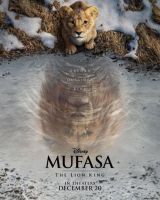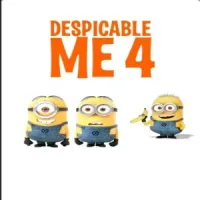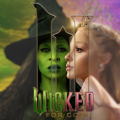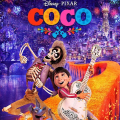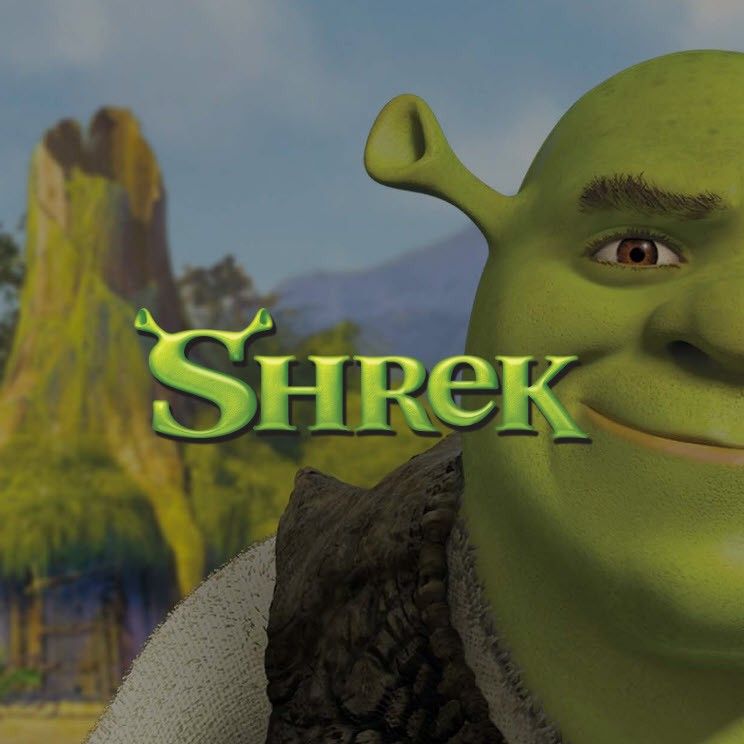
Shrek
Shrek
I remember the very first time I sat down to watch Shrek. I had heard a lot of buzz about this animated movie that promised a fresh twist on traditional fairy tale narratives, and I was intrigued by the idea of a rather unconventional protagonist overcoming stereotypes. Sitting before the screen, I felt a mix of curiosity and excitement as the opening scenes unfolded. It was as if I were entering a world that was both familiar and entirely new—a land where humor, adventure, and unexpected depth blended together seamlessly.
The World Beyond Traditional Fairy Tales
From the moment the story began, I was drawn to the ways Shrek reimagined the classic fairy tale setting. Instead of the pristine, immaculate worlds that are often depicted in such stories, this movie presented a messy, vibrant, and delightfully chaotic universe. I was charmed by the fact that the narrative did not rely solely on idealistic heroes or flawless princesses. Instead, it embraced imperfection and celebrated misfits, which made the world feel accessible and true to life in its own magical way. Every backdrop, every setting, resonated with a touch that was both magical and relatable.
The Unconventional Hero
Shrek, the titular character, is not your typical hero. In my view, his realism made him incredibly endearing. He is gruff and self-reliant yet layered with emotional complexity that gradually reveals an earnest and kindhearted nature beneath his rough exterior. Watching him navigate the obstacles put in his path, I felt his internal conflicts which made him deeply human despite his ogre status. His journey of self-discovery was something I could relate to, witnessing him confront not only external challenges but also his internal insecurities was both captivating and heartening.
The Dynamic Duo and Unexpected Friendships
One of the aspects that kept me glued to the screen was the relationship formed between Shrek and his quirky sidekick, Donkey. The banter between them was fresh and filled with an energy that could only be described as infectiously amusing. I found their interactions to be an exemplary mix of humor and sincerity, providing not only comic relief but also moments of genuine warmth. It was refreshing to see a narrative that celebrated friendship in a way I had seldom experienced in animated films.
The Enchanting Animation and Visual Craftsmanship
The stunning animation in Shrek was a marvel to behold. Every frame was meticulously designed with brilliant attention to detail. I was particularly impressed by how the animators managed to create expressive characters and vibrant landscapes that brought the story to life. The imaginative art style combined with a vibrant color palette gave the film a unique charm that set it apart from other animated works. I found myself pausing at times just to admire the subtle details in the background, the playful integration of modern pop culture references in a fantasy landscape, and the overall warmth that radiated from the visuals.
The Richness of the Narrative and Storyline
Delving deeper into the storyline, I realized that Shrek was much more than a simple animated tale. It was, in many ways, a clever commentary on societal expectations and identity. The plot was loaded with enough twists and turns to keep me engaged from start to finish. Each scenario carefully balanced humor with moments of introspection, inviting me to ponder over themes of acceptance and individuality. Watching Shrek navigate his unconventional path challenged my preconceived notions about what a hero ought to be and encouraged me to appreciate the beauty in imperfection.
The Clever Use of Humor and Witty Dialogue
Humor is a core pillar of the Shrek movie, and I repeatedly found myself laughing out loud at the clever one-liners and situational comedy. The script was peppered with witty remarks that catered to both younger audiences and adults. I appreciated how the humor was layered—on one hand, there were silly jokes and playful gags, while on the other, there was a satirical commentary on the cliches of fairy tales and Hollywood storytelling. This delicate balance kept the tone light and engaging, while also providing food for thought, thereby enriching the overall cinematic experience.
The Soundscape: Music and Audio Effects
The musical score and sound effects played an integral role in enhancing the film’s atmosphere. I was pleasantly surprised by the selection of songs and the clever integration of popular music moments that complemented the narrativeperfectly. Every musical cue seemed thoughtfully placed, accentuating the moods of various scenes. The audio design crafted a sense of immersion that was hard to shake off. There were moments when the background score transported me deeper into the unfolding drama, and other instances where the upbeat tunes lifted my spirits and kept the energy levels high. It was a harmonious blend that added layers to the emotional depth of the movie.
The Depth of Character Development
As the narrative unfolded, I noticed an impressive attention to character development that went beyond the surface-level humor. Each character, whether they were the obvious heroes or the unlikely villains, was given a backstory that lent further credence to the overall arc. Shrek himself, as well as supporting characters like Princess Fiona, experienced significant growth as the story progressed. I felt a profound connection with their struggles and triumphs as they navigated the conflicts between their inner desires and societal expectations. The characters evolved in a way that felt organic, with their personal journeys acting as the backbone of the film’s dynamic storytelling.
The Role of Fairy Tale Tropes Reimagined
One of the aspects that I found utterly fascinating was the film’s approach to traditional fairy tale tropes. Many elements that I had grown up with were playfully subverted throughout the narrative. Rather than presenting a perfect princess or an invincible prince, the film chose to place characters in scenarios that forced them to confront their vulnerabilities. This reinvention was handled with care and wit, making me see familiar genres in a brand new light. I was continuously entertained by the way classic characters had been reinterpreted, transforming a conventional tale into an unpredictable adventure filled with both laughter and introspection.
The Intensity of Emotional Undertones
Despite its humorous facade, the film skillfully wove in deeply emotional moments that resonated with me on a personal level. The journey of self-acceptance, the struggles of overcoming societal prejudice, and the courage to redefine one’s identity were themes that were subtly but powerfully explored throughout the story. There were moments when the raw emotional performances struck a chord with my own experiences, inviting me to reflect on personal struggles and victories. It was this delicate interplay between humor and heartfelt emotion that elevated the film from mere entertainment to something much more substantial and memorable.
The Art of Satire and Social Commentary
Another layer that captivated my attention was the clever satire embedded within the film. Shrek was unabashedly critical of the overly saccharine and formulaic nature of many traditional animated films. The self-awareness embedded within the dialogue and scenarios provided a refreshing commentary on the conventions of the genre. I found it both amusing and thought-provoking, as it subtly critiqued Hollywood’s tendency to recycle old tropes. The humorous digressions felt like insider jokes meant for discerning viewers who could appreciate the meta-commentary on the state of modern storytelling. This aspect made the viewing experience uniquely engaging and intellectually stimulating.
The Integration of Modern References in a Fantasy Setting
What truly distinguished Shrek from other fairy tale narratives was its remarkable ability to blend modern culturereferences into a fantastical setting. I was surprised by the audacity with which the film inserted contemporary elements into a medieval landscape. Instead of feeling out of place, these references added a layer of irony and humor that resonated with the audience. Observing how the film balanced the boundaries between a timeless fairy tale and current pop culture gave me a sense of both nostalgia and novelty. This juxtaposition enriched the narrative, lending it an edge that was both clever and refreshingly irreverent.
The Intricacy of the Visual Storytelling
Beyond the vibrant colors and high-quality animation, the movie’s visual storytelling was something I truly admired. Every scene was crafted with an intent that went beyond simple entertainment. The detailed expressions, subtle gestures, and the carefully constructed background elements added an extra layer of narrative depth that I found mesmerizing. It was evident that a lot of thought had gone into ensuring that the visual aspects of the film contributed meaningfully to the story. I often found myself pausing to take in the rich details that had been effortlessly woven into the set design and cinematographic choices, which made the overall experience deeply satisfying.
The Interplay Between Humor and Pathos
The elements of humor and pathos in Shrek worked in perfect harmony to create a balanced emotional canvas. I was constantly amazed by how the film could evoke hearty laughter one moment and profound empathy the next. The transitions between light-hearted comedy and touching moments were seamless, making the experience incredibly dynamic and unpredictable. This interplay ensured that the narrative never felt monotonous. The film's ability to oscillate between amusement and heartfelt sentiment accurately reflected the multifaceted nature of life itself—a lesson that unexpectedly resonated with me during the viewing.
The Voice Acting and Character Inhabitance
A crucial component of my enjoyment of Shrek was the stellar voice cast that brought each character to vivid life. The vocal performances were as animated and diverse as the characters themselves. I was particularly taken by the expressive qualities in the voices, which conveyed a range of emotions with striking authenticity. The dialogue, delivered with impeccable timing and wit, made me feel as though I was part of an interactive and lively conversation rather than merely watching a movie. It was clear to me that the voice actors had imbued their characters with distinct personalities, allowing even the most humorous moments to carry an undercurrent of sincerity and depth.
The Genre-Bending Approach to Storytelling
Shrek’s genre-blending approach was refreshing and intellectually stimulating. While it is fundamentally an animated family film, the layered narrative structure allowed it to incorporate elements from adventure, romance, and subtle drama. I found this mix to be both innovative and captivating, as it defied the conventions of what one typically expects in the animated fantasy genre. The film effortlessly incorporated layers of complexity that catered to diverse audiences regardless of age, thereby ensuring that every viewing uncovered a new nuance. This multifaceted approach to storytelling kept me invested throughout, as I often found myself reconciling the light-hearted banter with the underlying dramatic themes.
The Influence on Modern Animation and Fairy Tale Reinterpretation
Reflecting on Shrek now, I recognize that its impact on modern animation and the reinterpretation of fairy tales has been significant. The film broke new ground by demonstrating that there was ample room for creativity and risk-taking within the confines of animated storytelling. I appreciated how it paved the way for future works to explore unconventional narratives and character archetypes without being tethered to traditional formulas. Its progressive outlook and willingness to subvert expectations inspired me to revisit other classic stories and examine them from a renewed perspective. The film has a lasting legacy that continues to influence both filmmakers and audiences alike—a legacy that I feel fortunate to have experienced firsthand.
The Unspoken Layers of Social Commentary
While many of the film’s humorous elements were immediately accessible, I also found myself intrigued by its subtle social commentary. Moments in the film frequently hinted at the power dynamics prevalent in society and the importance of looking beyond surface appearances. Observing Shrek’s struggle against superficial expectations and the rigid norms of his world prompted me to think critically about similar issues in real life. These layers of meaning were not overtly stated but were insidiously woven into the fabric of the narrative. This understated yet impactful critique added a dimension to the movie that pushed it beyond traditional entertainment, enriching my overall viewing experience.
The Experimentation with Narrative Structure and Pacing
The structure and pacing of Shrek were a study in fine balance. I vividly recall moments where the film would shiftgears, transitioning from fast-paced, humorous sequences to slower, more reflective passages. This fluctuation in pacing kept the narrative dynamic, ensuring that the audience’s attention was consistently met with refreshing twists and unexpected turns. Each scene was crafted with a thoughtful consideration of timing, ensuring that even the more energetic sequences had moments of calm introspection interspersed throughout. I was particularly impressed by how these transitions were executed, as they allowed the emotional weight of the story to build gradually and organically.
The Aesthetic Appeal of Character Designs and Costuming
Beyond the narrative and humorous elements, I found myself thoroughly captivated by the character designs and artistic costumes. The design choices served as visual metaphors, subtly alluding to the archetypes each character embodied while simultaneously highlighting their quirks. I admired the creativity behind these designs as they brought an extra layer of vibrancy and personality to the movie. The attention to small details in each character’s attire and expressions made the film immediately engaging, and I often found myself marveling at how these visual cues added to the overall storytelling. The unique aesthetic appeal elevated the animated experience into a piece of art that was as refined as it was playful.
The Integration of Humor with Heartfelt Storytelling
Throughout the movie, I witnessed a brilliant synthesis of humor with genuine emotional storytelling. As the narrativeprogressed, I could sense that the filmmakers were deliberate in their efforts to craft a storyline that was as thought-provoking as it was entertaining. The moments of levity were strategically placed to alleviate tension, only to be followed by scenes that excavated deeper emotional truths. This rhythmic interplay between laughter and tear-jerking poignancy not only made the experience exhilarating on a surface level but also anchored it in a philosophical framework. The film’sability to oscillate between varying emotional extremes made it a truly multifaceted journey that resonated with my own experiences of life's unpredictability.
- Innovative reimagining of traditional fairy tale tropes that offers a fresh narrative twist
- Clever dialogue and humor that appeals to both younger audiences and adults
- Vivid, high-quality animation that brings an imaginative world to life
- Memorable character voices that add depth and personality to the story
- A balanced blend of humor and heartfelt emotional moments that keeps the audience engaged
- A progressive narrative that challenges conventional storytelling and celebrates individuality
- The integration of modern cultural references can sometimes feel incongruent with the fairy tale setting
- Certain pacing transitions between action-packed and slower, reflective scenes may seem uneven
- Some secondary character backstories and emotional arcs could have been developed further



